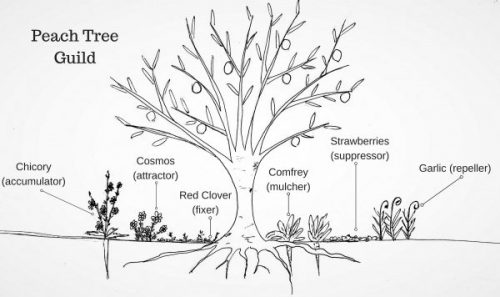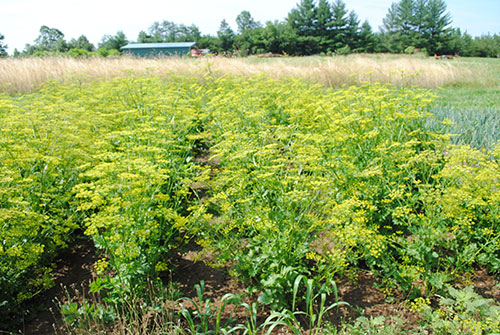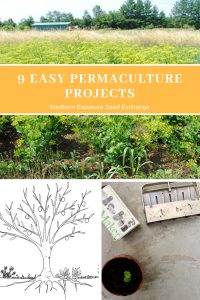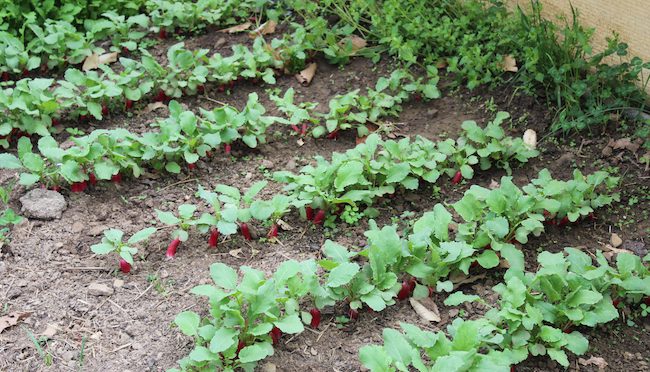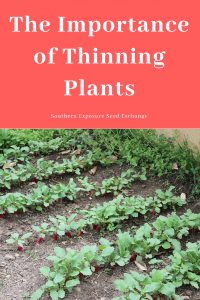
Less work, better production is every gardener’s dream. One method that can help you to achieve this dream is to use a minimal or no-till permanent bed system.
More Production
Permanent beds perform better because the soil is never compacted and rarely disturbed. By using no-till practices on permanent beds beneficial insects, microbes, and fungi are allowed to thrive in the soil making for healthier more productive plants.
The pathways between permanent beds also encourage beneficial insects. They can be mulched to provide habitat for species like predatory insects or cover cropped with something like white clover that can be kept fairly short and still attract pollinators. Additionally cover cropped pathways can be mowed and the clippings can be used to add organic matter to the beds.
Permanent beds especially with pathways in cover crop helps reduce erosion keeping more nutrients in the beds for your plants.
Less Work
Unless you’ve got a tractor rototilling is usually a very time consuming spring project. Obviously no-till agriculture eliminates this need but it also reduces the amount of space that you have to carefully maintain. Mulch or mow where you walk rather than worrying about keeping it weed free.
Permanent beds can also help you plan out plantings for easy rotation and maintenance. You can easily keep track of what was where each year and space plantings to allow for easy cultivation with hand tools like a wheel how or stirrup hoe. They also make it easier to set up drip irrigation systems which are more efficient than overhead watering.
Finally, they make it easier to integrate perennials and self sowing plants into your garden plan. These plants make productive low maintenance additions.
Less Money
Tillers can be a costly expense for farmers and gardeners alike. Avoiding the initial cost of a tiller plus the fuel that goes into running a it at least once a year is a great way to save money in the garden.
As permanent no-till beds also keep your beds healthier they’ll reduce the need for costly outside inputs.
Mother Earth News Fair
June 2-3 Southern Exposure will be putting on a few workshops at the Maryland Mother Earth News Fair! If you’re in the area be sure to check out SESE’s workshops for some excellent gardening advice.
Grow More, Work Less: Expert tips for your vegetable garden with Ira Wallace
Available in: Maryland – North Carolina
Maryland Time: Sunday – 10:00-11:00 a.m.
Stage: Heirloom Gardener Stage
Simple tips and techniques for adding self-sowing annual, perennial, and biennial vegetables to your garden. Learn how to save time and money in your edible landscape, permaculture beds, or any vegetable garden.
Sun Growing Common and Uncommon Greens for Summer Salads and More
Available in: Maryland – North Carolina
Maryland Time: Sunday – 1:00-1:30 p.m.
Stage: Heirloom Gardener Stage
Salad greens are some of the most satisfying plants a gardener can grow. What else can you sow a little of in a bare patch and start harvesting just four weeks later? If you’ve mastered the basic greens (such as romaine, leaf lettuces, and spinach) and you’re looking for something a little different, or if your salad patch looks a little peaked in mid-summer, Ira Wallace has a few adventurous ideas for you as well as tips, varieties, and timing to keep the ordinary greens coming. Learn about 10 out-of-the-ordinary greens to try this year, including some that bridge the mid-summer gap between the cool, prolific spring and fall salad seasons.
Turmeric and Ginger: Growing for medicinal and culinary use
Available in: Maryland – North Carolina
Maryland Time: Saturday – 10:00-11:00 a.m.
Stage: Mother Earth Living Stage
There’s nothing fresher than turmeric and ginger you grow yourself! Learn the fundamentals of planting turmeric and ginger for a bountiful harvest. Ann Codrington shares her tips and tricks to get the moisture, timing, and temperature just right for sprouting, and shows participants how to care for plants as they go through their natural phases of growth.
Hands-on: Seed-Cleaning Techniques and Tips Irena Hollowell, Gryphon Corpus, and Sappho Heavey
Available in: Maryland
Maryland Time: Saturday – 11:30-12:30 p.m.
Stage: Hands-On Demonstrations
Irena Hollowell, Gryphon Corpus, and Sappho Heavey show you how to clean seeds you’ve harvested in your garden for good germination rates and shelf life. This workshop focuses on the threshing, winnowing, and screening of seeds that mature in dry pods or seedheads (such as beans, okra, and lettuce), and participants can try their own hand at winnowing. Hollowell also briefly touches on the fermentation of seeds that mature wet. These methods are applicable to seeds of flowers and herbs, as well as vegetables. Take home handouts and seed samples. Note: An extra pass is required for this workshop. Space is limited, get your passes today.
Pin it for later.



